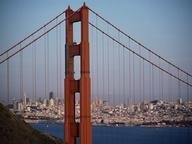Quiz Answer Key and Fun Facts
1. For what purpose was the original Hollywoodland sign placed on Mount Lee?
2. Which turn of the century inventor and industrialist tried to use patents to monopolize the early movie making industry, which in turn made Hollywood a desirable destination because it was far from his grasp?
3. Which film studio was the first to be built in Hollywood?
4. United Artists was formed in 1919 on the backing of four Hollywood heavyweight names. Which of the following was *NOT* one of those four?
5. In 1920, in the early days of Hollywood, the marriage of which power couple embodied the youth and optimism of the age?
6. Griffith Park is an enormous urban playground in Los Angeles. For whom was it named?
7. Sid Grauman built one of the first movie palaces in Hollywood where the first ever Hollywood premiere took place for "Douglas Fairbanks in Robin Hood" in 1922. What was the theme of the theater?
(Hint: Think of one of Elizabeth Taylor's most famous roles.)
8. This movie palace, built by Sid Grauman, has become an iconic piece of Hollywood real estate and even hosted the Oscars. What is the Asian theme of this theater where the stars leave their hand and foot prints in the cement?
9. There are several theories on how Hollywood got its name. What is *NOT* one of them?
10. "In the Power of the Sultan" (1909), arguably the first narrative film to be fully shot in California, had a running time of approximately ten minutes.
Source: Author
tazman6619
This quiz was reviewed by FunTrivia editor
gtho4 before going online.
Any errors found in FunTrivia content are routinely corrected through our feedback system.
